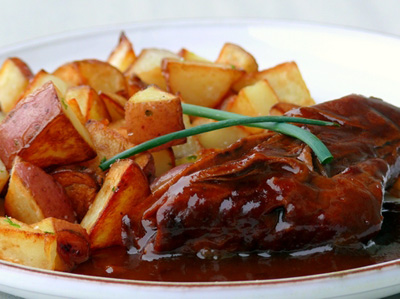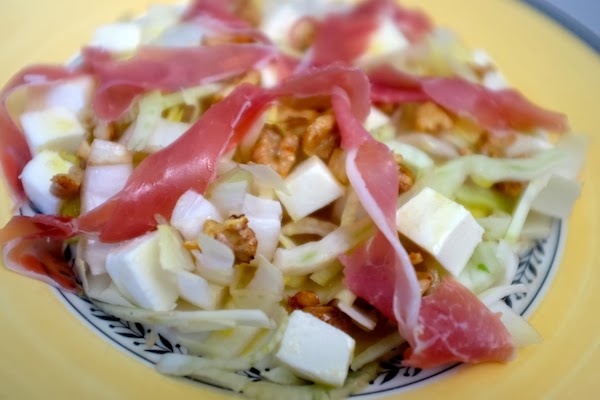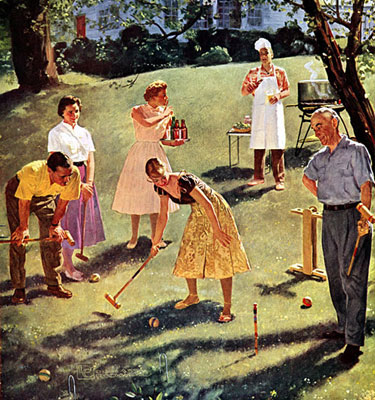 I ‘d always look forward to this time of year when I worked at North Dakota State University. One of my colleagues would bring a big slow-cooker full of her delicious Beer Cheese Soup. Up to that point in my life, the only Beer Cheese soup I had tasted was served at a Fargo restaurant. It was very thick, very cheesy and very goopy. In my opinion, too thick, too cheesy and too goopy.
I ‘d always look forward to this time of year when I worked at North Dakota State University. One of my colleagues would bring a big slow-cooker full of her delicious Beer Cheese Soup. Up to that point in my life, the only Beer Cheese soup I had tasted was served at a Fargo restaurant. It was very thick, very cheesy and very goopy. In my opinion, too thick, too cheesy and too goopy.
Nancy’s Beer Cheese Soup would send a sweet, yeasty beer aroma wafting through the NDSU hallway. Lunch that day would be a big mug of soup ladled from the hot slow-cooker topped with freshly popped corn right out of the microwave oven.
Now, I don’t normally do much cooking with Cheez Whiz, but I just can’t make this soup any other way. You’ll see why when you taste it. The soup is light and creamy with just the right amount of beer and cheese flavors. I use unsalted butter in this recipe. The soup gets plenty of salt from the Cheez Whiz and chicken broth.

 When you live in the Midwest, northern Minnesota to be more exact, where below-zero temperatures are no big deal, but just part of winter life, a hot bowl of hearty homemade soup is highly appreciated.
When you live in the Midwest, northern Minnesota to be more exact, where below-zero temperatures are no big deal, but just part of winter life, a hot bowl of hearty homemade soup is highly appreciated. Except for an ill-fated attempt to grow mushrooms in a box last winter and the occasional mini-fungi that pop up in the garden mulch, we do not grow mushrooms here on the farm. I guess that’s one of the reasons I’ve neglected writing much about this most meaty of vegetables.
Except for an ill-fated attempt to grow mushrooms in a box last winter and the occasional mini-fungi that pop up in the garden mulch, we do not grow mushrooms here on the farm. I guess that’s one of the reasons I’ve neglected writing much about this most meaty of vegetables. Brisket....I'm licking my lips. I love it. I've always loved it...as long as it's cooked right. Let's face it, it's a tough, flat piece of meat. It's a chest muscle. The only way to cook it right, is low and slow...which is why we braise. And the Guinness adds a nice layer of deep complexity to the sauce, just like red wine does to a pot roast. However, since the barley used to make Guinness is roasted, you get this really deep flavor in dished like this.
Brisket....I'm licking my lips. I love it. I've always loved it...as long as it's cooked right. Let's face it, it's a tough, flat piece of meat. It's a chest muscle. The only way to cook it right, is low and slow...which is why we braise. And the Guinness adds a nice layer of deep complexity to the sauce, just like red wine does to a pot roast. However, since the barley used to make Guinness is roasted, you get this really deep flavor in dished like this. Growing up I ate a green salad pretty much every night with dinner. In Italy, we did the same, though it was served at the end of the meal. These days, I find it hard to convince my other half to eat salad. My solution is to make main dish salads. This one uses Belgian endive and is easy to make for one or a group. It has many delicious things added to a base of endive and fennel, namely candied walnuts, fresh mozzarella and prosciutto.
Growing up I ate a green salad pretty much every night with dinner. In Italy, we did the same, though it was served at the end of the meal. These days, I find it hard to convince my other half to eat salad. My solution is to make main dish salads. This one uses Belgian endive and is easy to make for one or a group. It has many delicious things added to a base of endive and fennel, namely candied walnuts, fresh mozzarella and prosciutto.
